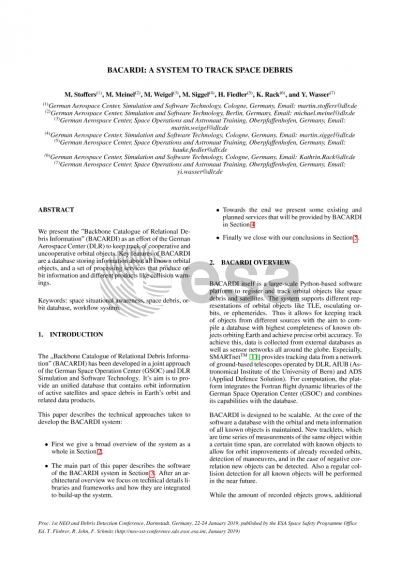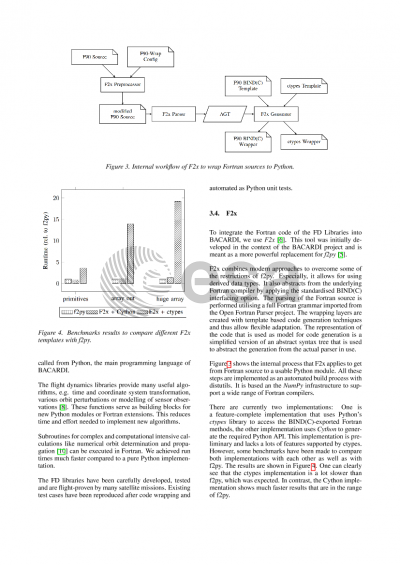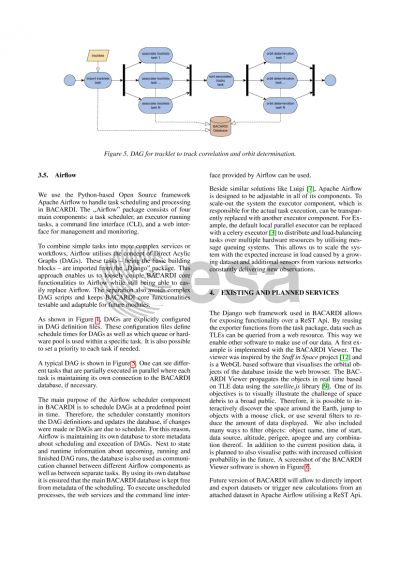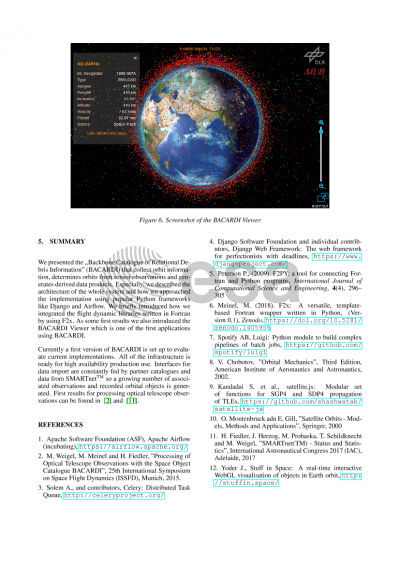Document details

Abstract
We present the Backend Catalogue for Relational Debris Information (BACARDI) as an effort of the German Aerospace Center (DLR) to keep track of cooperative and uncooperative Earth orbiting objects. Key features of BACARDI are a database storing information about all known active satetellites and space debris objects, and a set of processing services that produce different products like collision warnings, or re-entry predictions.
BACARDI itself is a large-scale Python-based software platform to register and track space debris particles. The platform integrates the FORTRAN flight dynamic libraries of the German Space Operations Center with a state-of-the-art database. The system supports different orbit representations of like TLE, osculating orbital elements, or ephemeris data. Thus it allows keeping track of objects from different sources to collect a full set of known objects in Earth orbit. Data is collected from other databases as well as sensor networks all around the globe. Especially a close integration with SMARTnet(tm) allows detection of unknown objects and improvement of orbits of known objects.
As the amount of cataloged objects grows, the software is designed to be scalable. At the center of the software is a database with the orbits of all detected objects. New observations are correlated with known objects from the database to allow for object identification, as well as improvements to recorded orbits, and detection of maneuvers. Close approches for all known objects are detected with every orbit update.
Additional processing power can be added by providing additional computing hardware. This enables us to keep the system growing while our datasets grows from approximately 18,000 objects today to a projected number of about 100,000 objects including debris particles bigger than 10 cm. As a first goal, we are implementing a system that is able to process about 10 measurements per second. Next to our scalable architecture this is achieved by tuning the FORTRAN codes for use on many-core systems and accelerator hardware.
Preview







